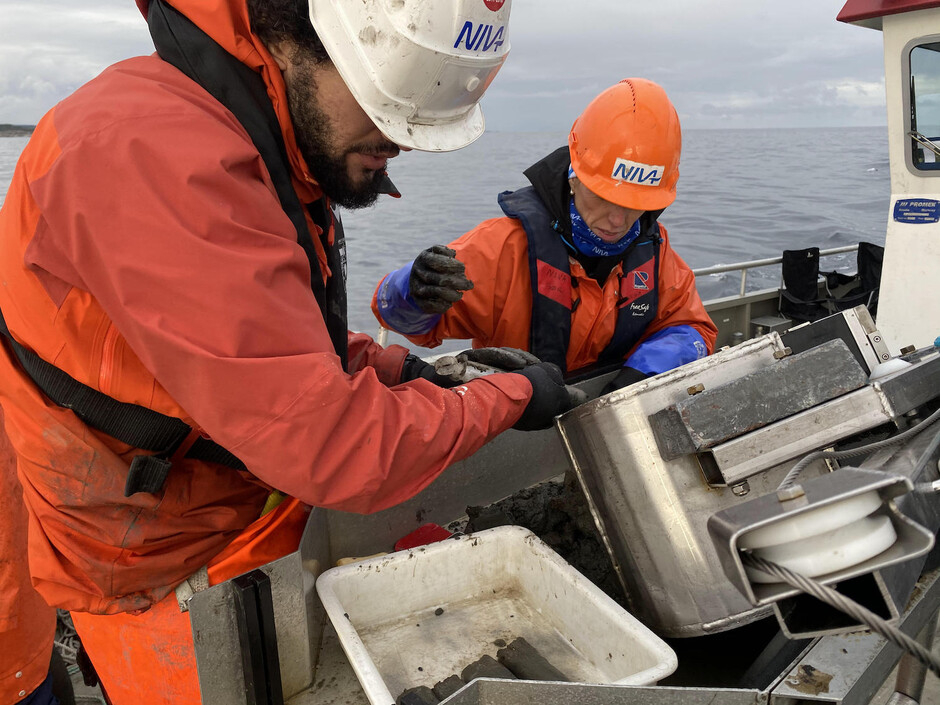Contact:
- hilde.trannum@uia.no
- Phone
- +47 38 14 26 48
Coastal ecosystems and nearshore marine areas are among the most productive systems in the world. However, the services coastal zones provide to society, economy and environment are adversely affected by multiple threats induced by humans. Over the past decades, we have observed increased runoff of organic material from land to the coast in the major rivers draining into the Skagerrak. Consequently, water clarity has steadily declined, a phenomenon referred to as ‘coastal darkening.’
Bringing expertise from both upstream- and downstream marine ecosystems, researchers at the Norwegian Institute for Water Research (NIVA) And UiA are currently investigating the drivers, processes and impacts of the ongoing darkening of coastal waters in Norway. Extensive knowledge of ongoing biogeochemical changes in marine waters can be derived from long-term monitoring programs that NIVA has coordinated over past decades. These include the Ecosystem monitoring of coastal waters (ØKOKYST) and the Riverine monitoring program (RID) that collect monthly data on physical, chemical and biological variables. Partly financed by CCR, NIVA has also performed fieldwork to study the processing and fate of terrestrial organic matter in coastal waters in Storelva-Sandnesfjordsystem, close to Risør.

Our research approach to coastal darkening combines information from national monitoring programs, field investigations and laboratory studies. This research will help to shed light on the urgent question of how altered land-ocean interactions may, and already have, impacted Norwegian coastal ecosystems, how ecosystem health might be affected in the future, and where the implementation of management measures may be most effective.
Likely drivers of coastal darkening are the increased runoff of organic material from land to sea, as well as an increased inflow of fresh water via rivers, which has been observed for the Skagerrak (Frigstad et al. 2018, Deininger and Frigstad 2019, Frigstad et al. 2020). A local river-fjord transect (Storelva-Sandnesfjord) has been monitored since 2015 with high resolution automated sensors. These data suggest that extreme runoff from land to sea and associated transport of material happens predominantly during spring and autumn floods in this area. The incoming organic material and fresh water alter the light conditions in coastal zones.
Both of these factors are linked to climate change (e.g., increased runoff with precipitation) and human activities on land (e.g., land use changes and nutrient deposition, which alter soil and catchment processes and increase transfer of land material from agriculture, forestry and urbanization) (Deininger and Frigstad 2019). In the future, warming and increased precipitation is expected to further accelerate the influx of land material to coastal areas.
Coastal darkening may have diverse consequences on the overall biology of affected zones by altering essential living conditions for basal producers. For example, phytoplankton, seagrasses and kelp are all dependent on light for photosynthesis. Thus, the availability of light is of central importance. Visually hunting predators such as fish or seabirds may also be affected by darkening, as essential living conditions will change. Such changes may alter daily and seasonal behaviours and life histories of many organisms such as fishes and jellyfishes. On the other hand, the increase in organic material (especially carbon) from land may boost bacterial processes and filter-feeding organisms that feed on sedimentary particles. Filter feeders have been shown to increase on both hard- and soft-bottom habitats (Frigstad et al. 2018).
Eventually, such bacterial boost, in combination with a decrease in CO2 uptake by photosynthetic phytoplankton, seagrasses and kelp, may lead to a shift in the carbon storage potential of coastal zones and increase anoxic zones on seafloors and bottom water. Increased terrestrial organic inputs may also impact faunal organisms living above and within the sediment compartments on the coastline (McGovern et al., 2020). Potential changes in species functional traits and community structure may also affect carbon dynamics. The organic material containing nutrients is accompanied by contaminants such as methyl mercury and persistent organic pollutants. Therefore, both ecosystem and human health risks may increase with ongoing darkening.
References
Deininger, Anne, and Helene Frigstad. 2019. ‘Reevaluating the Role of Organic Matter Sources for Coastal Eutrophication, Oligotrophication, and Ecosystem Health.’ Frontiers in Marine Science 6. https://doi. org/10.3389/fmars.2019.00210.
Frigstad, Helene, Guri Sogn Andersen, Hilde Cecilie Trannum, Lars Johan Naustvoll, Øyvind Kaste and Dag Øystein Hjermann. 2018. Synthesis of Climate Relevant Results from Selected Monitoring Programs in the Coastal Zone. Part 2: Quantitative Analyses. https:// niva.brage.unit.no/niva-xmlui/handle/11250/2595792.
Frigstad, Helene, Øyvind Kaste, Anne Deininger, Karsten Kvalsund, Guttorm Christensen, Richard G. J. Bellerby, Kai Sørensen, Marit Norli and Andrew L. King. 2020. ‘Influence of Riverine Input on Norwegian Coastal Systems.’ Frontiers in Marine Science 7. https:// doi.org/10.3389/fmars.2020.00332.
McGovern, Maeve, Amanda E. Poste, Eivind Oug, Paul E. Renaud, and Hilde Cecilie Trannum. 2020. ‘Riverine Impacts on Benthic Biodiversity and Functional Traits: A Comparison of Two Sub-Arctic Fjords.’ Estuarine, Coastal and Shelf Science 240 (August): 106774. https://doi. org/10.1016/j.ecss.2020.106774